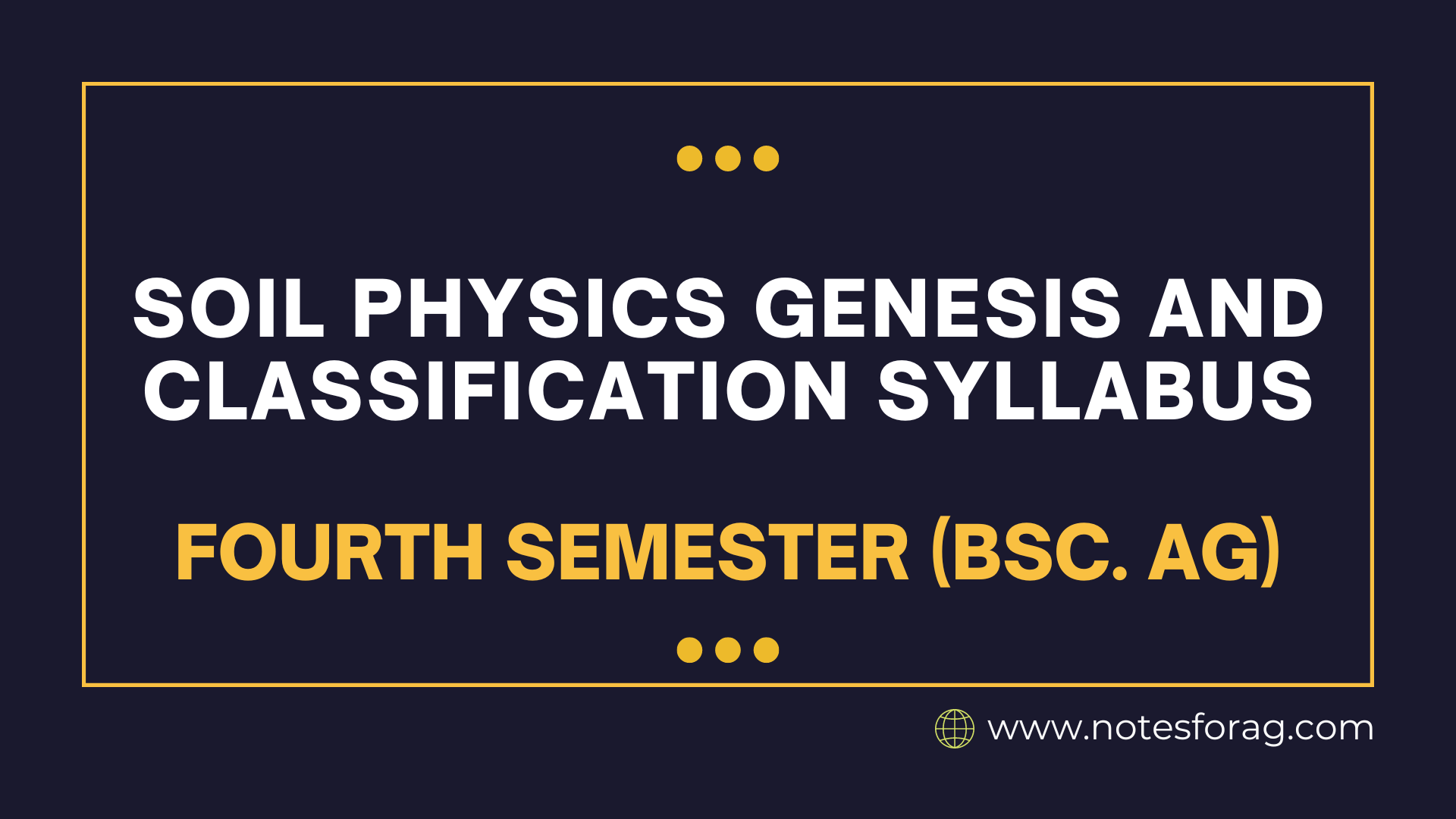| Course Code | SSC 203 |
| Course Title | Soil Physics, Genesis and Classification |
| Credit Hour | 2 (1+1) |
| Full Marks | 50 |
| Theory | 25 |
| Practical | 25 |
Objectives
Upon the completion of this course, the students will be able to know basic knowledge of soil physics especially soil water movement, genesis, soil forming process and mineral weathering and use diagnostic soil properties for developing soil classification systems.
Syllabus for Soil Physics, Genesis and Classification in BSc. Agriculture
Quantitative concept of soil physics, Energy concepts and measurement of soil moisture, total soil water potential, gravitational potential, pressure potential and osmotic potential, quantitative expression of soil-water potential; soil moisture characteristic curve; flow of water in saturated, unsaturated and vapor forms; infiltration characteristics, classes and role of soil moisture and temperature regimes; soil forming processes; macro and micro morphological properties of soils; modern soil classification system; kinds and distribution of soils of Nepal and potential uses.
Course Outline
A. Theory
B. practical
| S.N | Topic / Chapter Name | No. of Practical |
| 1 | Determination of soil wetness by gravimetric, volumetric and soil depth | 1 |
| 2 | Determination of water availability by resistance method | 1 |
| 3 | Mass and volume relationships of soil constituents: sample problems | 1 |
| 4 | Measurement of soil-moisture potential by field tensiometer | 1 |
| 5 | Calculation of water quantities | 1 |
| 6 | Observation of capillary process of soil | 1 |
| 7 | Demonstration and explanation of already developed different types and scale of soil maps, aerial photograph topographic maps and report | 1 |
| 8 | Observation and description of the color plates for dominant genetic processes involved in soil development | 1 |
| 9 | Determination of saturated Hydraulic Conductivity of soil | 2 |
| 10 | Learning practices of describing sample soil profiles for comparative interpretations and classification under distinctive landscapes | 2 |
| 11 | Development of soil maps and reports | 1 |
| 12 | Group presentation | 2 |
| Total | 15 |
References
Daniel Hillel. 2004. Introduction to Environmental Soil Physics. Elsevier Academic Press.
Stanley W. Buol, R.J. Southard, R.C. Graham, and P.A. McDaniel. 2011. Soil Genesis and classification. 6th Ed. Wiley-Blackwell.
Nyle C. Brady and Ray R. Weil. 2012. The Nature and Properties of Soils. 14th Ed. Prentice- Hall, Inc.
S. W. Buol, F. D. Hole, R. J. McCracken and R. J. Southard. 1997. Soil Genesis and Classification. 4th Ed. Iowa State University Press / Ames.

